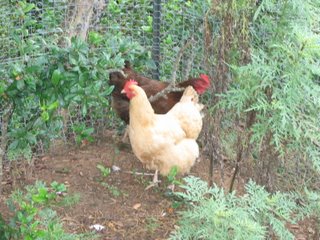
Before we even left California but with the intent to come here, the neighbors graciously bought some chickens and raised them for us in preparation for us having some once we moved here. Farm fresh chickens make farm fresh eggs, and in the opinion of most people who have tried the difference between them and store bought ones, farm fresh eggs are MUCH better, in taste and in health (because we know what they’re eating!).
And so, with our chickens here on the land but being tended by the neighbors, we needed a place for them. I had a subscription to Countryside magazine at the time, and in one of the issues is plans for what’s called a “chicken tractor,” which essentially is a movable chicken coup, which conveniently includes fertilization of the area on which the coup is sitting at any one time. It had explicit instructions (which with my zero years of construction experience was drawn to 🙂 ), and so I proceeded to try to put one together.
Here are some pictures:
Hey, I had to make sure it worked!!
Here’s a final version picture:
While the idea of fertilizing an area with this chicken tractor is nice, it hasn’t been too practical for us, in that, 1) the area is a little small for the 20-25 chickens we have; and 2) we let the chickens free-range as much as possible (which we believe is better for them and takes less feed too), and so their fertilization ends up everywhere they go (and I mean everywhere!). Still though, the chicken tractor has been a nice chicken coup; and we can move it to anywhere we might need to as our homestead grows.
Over the last two Springs, the Lord has granted that some of our hens get “broody”, which means they want to sit on eggs to hatch them out. Our first year we had 5 chicks hatch; 3 made it to adult chicken status, and only 1 hen remains. From last year, all 3 hatched are still alive, thankfully to God for His mercies and provisions.
With having a broody hen and eggs to sit on with the possibility of new chicks, we needed a place in which to separate them out away from the other chickens. And so, I put together a mini-tractor for them:
Chicks!
Takin’ a ride on the Mama Hen Express!
Also, once they outgrew that area and became pullet size, we needed another area; and so, we put up this pen area with its own coup:
Now, beside eating chickens as food (which with ours we haven’t done yet), as I mentioned, chickens lay eggs.
Here is our first egg!
And here’s our first meal with our first eggs:
What has been interesting to watch is some of their behaviors. Every night the chickens, like clockwork, “come home to roost”, literally. Regardless of where they traveled during the day, they end up coming back to their “home”, whether that’s a chicken tractor or a chicken pen.
In moving the young chickens to a pen area, they and the older chickens can get a little more used to each other, with the idea that eventually the young ones will be merged in with the main flock. Getting them used to each other is somewhat important, in that, chickens are apparently pretty territorial, and “new” chickens to their area typically need to be shown whose turf they are on; and so, there is often fighting among the hens, and if you have an alpha male rooster with a younger rooster being introduced.
Now, what we’ve done in the merger is take the new chickens from their coup in the pen area and put them in the main chicken tractor at night to let them come down from it in the morning. This helps to old flock get used to them when they’re more calm, and helps to new ones get used to their new “home.” We leave the pen area open so they can go to it for familiarity. This can go on for several days, but eventually the new chickens start to get the idea that their new “home” is in the chicken tractor; and they head there, instead of the pen, when it’s time to roost.
Another behavior that I’ve found interesting is the following: if you throw feed on the ground in one place, and they run to it there, and then you throw feed down in another place, almost invariably they run to the last place you threw feed, even though they had perfectly good feed right where they were: they seem to need the “next thing.” It reminds me of a couple of articles regarding how people often do things because they are attracted to the “change” aspect of the thing, for various reasons and in actuality not be led by the proper motivations.
God has been gracious with the provisions of the eggs during our time here so far. We are very grateful for what He teaches us daily through His creation and how He provides for us daily in accordance with His will.
— David
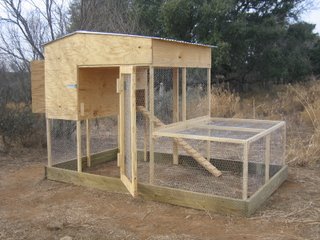
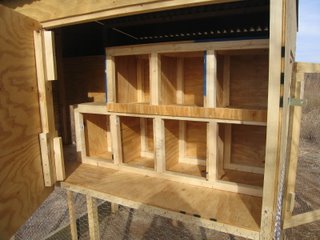
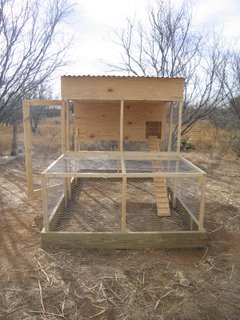
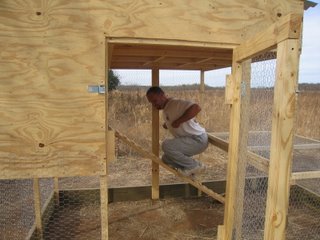
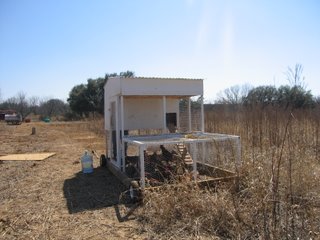
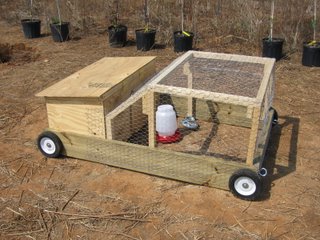
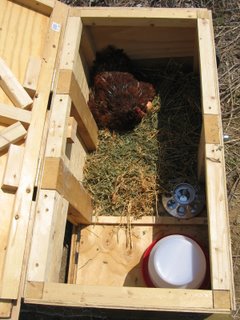
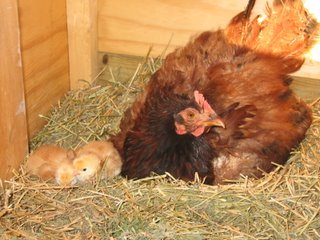
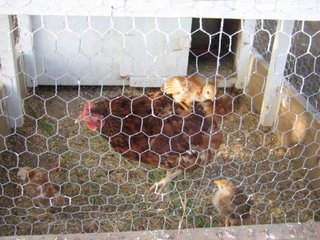
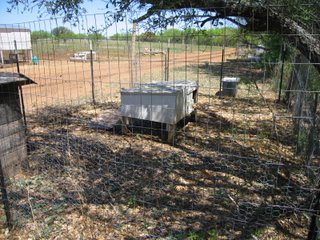
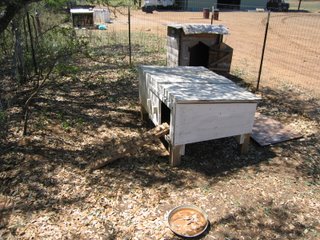
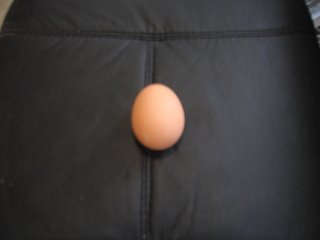
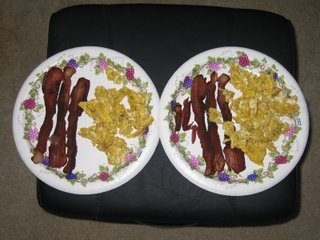
David, just a suggestion that I’ve found useful with my free range chickens. When you throw feed out to them, call them too. I call “chick, chick”. Before long they associate the call with the feed and when I can’t find them during the day, I just call them and they all come running! That way I can keep a eye on them because we live near dense woods and I’m always afraid that something will come out of the woods and get them.
Best, Manette
Neat info, thanks much, Manette.
— David
I’ve really enjoyed reading your journal, and I love the pictures. I have a couple of questions about your large chicken tractor. What is the maximum number of chickens that you think it could be used for? Can you leave the chickens in it all winter? Thanks!
Hi Andi,
Glad you’re enjoying it.
There was a time when we kept 20-25 chickens in there and didn’t let them out because of potential hawk attacks (after we had had one). If you are able to move it often, say every day or two, and move it on top of new landscape that has some vegetation, then it’s probably barely ok with that many chickens but probably not more, and maybe 15 would be probably max. Also, you probably only want one rooster in there, because the non-alpha male will probably end up spending most of its time in the nest area away from the alpha male.
There are many other designs for chicken tractors out there, depending on your situation and purposes. If you cannot completely free range them, an idea (and maybe even a better one) is being able to get them into some sort of pen rotation (with which a chicken tractor/portable chicken coup would be beneficial).
Hope that helps,
— David
David, Do you have building plans for this chicken tractor? Thanks, Deb and Steve in SC
Hi Deb and Steve,
I got them out of Countryside Magazine, Sept/Oct 2005 issue, Vol 89, No. 5, starting on I believe page 79.
Hope that helps.
— David